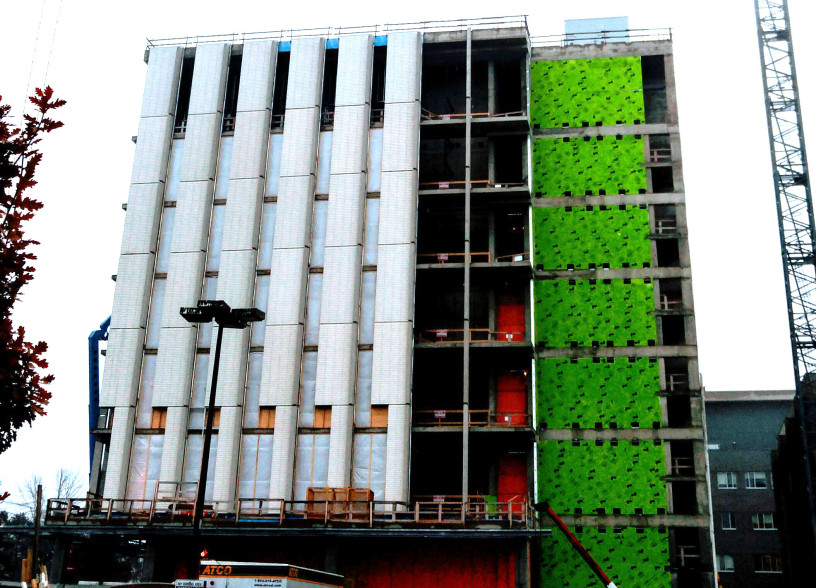UPDATE 30/11: The neuroscience department is slated to temporarily move into facilities at the University of Ottawa until the Health Science Building’s construction is completed, according to a statement released online by Carleton president Roseann Runte.
Students and staff in Carleton’s neuroscience department say they are concerned an upcoming eviction of the department’s Life Sciences Building will put both research and students’ futures at risk.
The university recently received $26.4 million in funding from the federal and provincial governments for renovations, which will include construction on the Life Sciences Building that is located close to Loeb Building at the southern end of campus, according to a Government of Canada press release. The building will turn into the Institute for Advanced Research and Innovation in Smart Environments (ARISE).
But to receive the funding, renovations must be completed by an April 2018 deadline, which poses problems for the university, according to Carleton University Students’ Association (CUSA) president Fahd Alhattab.
John Stead, chair of Carleton’s neuroscience department, said the eviction and subsequent construction will occur in March, forcing the department into a temporary, currently undetermined, location.
The department has already been planning for a permanent move into the new health science facilities being built on campus, according to Carleton president Roseann Runte. But, Alhattab said the new Health Sciences Building is set to be completed in fall 2017, several months after the planned eviction.
Runte said in an email the university did considerable consultation in developing plans for the new Heath Sciences Building, which would be an improvement to the current neuroscience location.
“We were fortunate to receive a grant that will allow us to renovate the current location . . . The funding came with strict deadlines before which all work must be completed,” Runte said. “Due to these inflexible deadlines . . . the faculty, students and their labs will have to be moved to a temporary location prior to taking up residence in their new home in the Health Sciences Building.”
She added the adminstration is commited to providing a suitable location with minimal inconvenience.
“The neuroscience department will end up with excellent facilities and is being asked to be patient for a short time while alternate arrangements are provided,” Runte said.
Stead said he only received an email stating the news of the eviction on Nov. 11. He added the sudden notice for the move has the potential to delay students’ graduation dates and disrupt research.
“Many undergraduate students have ongoing research projects and they would normally have until April to complete their thesis, now they don’t know how long they have to work in the labs,” he said. “Some may not be able to complete their honours thesis in a reasonable way at all which would have an impact on their acceptance into master’s programs.”
Stead said there are also concerns the move may invalidate some of the current research students are conducting.
The move not only has the potential for negative impacts in the future, but is currently taking a toll on students in the program.
“We are seeing current impacts of students having to rush through research,” said Greg Owens, a fifth-year student in the program. “Students were in the lab until all hours of the night this weekend trying to complete as much work as they can, and people are talking about not being able to go home for the holidays because they need to finish their work.”
On Nov. 25, members of the Graduate Students’ Association (GSA) tried to pass an emergency motion at a Carleton senate meeting that called for a pause on the eviction until a solution is found through transparent consultations.
But the motion failed to pass, as it did not get 60 per cent of the vote.
Alhattab said he is optimistic the university will unveil a plan that will satisfy neuroscience students and faculty. He added he has spoken with Runte and has been assured that a plan is in place.
“The difficulty they’ve had is they can’t share this plan yet because they’re working with an offsite private company,” Alhattab said.
Stead said the solution to the current problem is simple.
“The problem would go away entirely if we could remain in the research building to continue our research until the end of 2017.”






